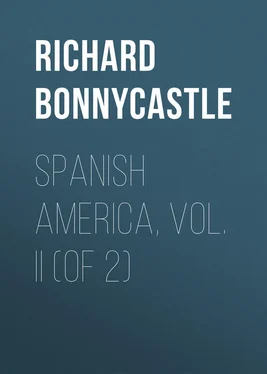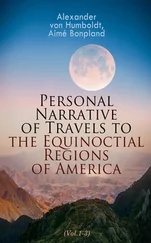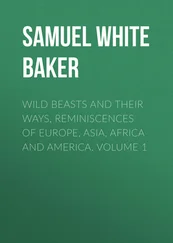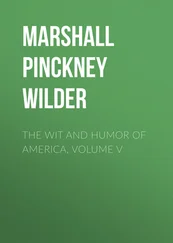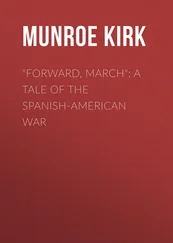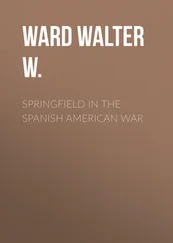Richard Bonnycastle - Spanish America, Vol. II (of 2)
Здесь есть возможность читать онлайн «Richard Bonnycastle - Spanish America, Vol. II (of 2)» — ознакомительный отрывок электронной книги совершенно бесплатно, а после прочтения отрывка купить полную версию. В некоторых случаях можно слушать аудио, скачать через торрент в формате fb2 и присутствует краткое содержание. Жанр: foreign_antique, foreign_prose, на английском языке. Описание произведения, (предисловие) а так же отзывы посетителей доступны на портале библиотеки ЛибКат.
- Название:Spanish America, Vol. II (of 2)
- Автор:
- Жанр:
- Год:неизвестен
- ISBN:нет данных
- Рейтинг книги:4 / 5. Голосов: 1
-
Избранное:Добавить в избранное
- Отзывы:
-
Ваша оценка:
- 80
- 1
- 2
- 3
- 4
- 5
Spanish America, Vol. II (of 2): краткое содержание, описание и аннотация
Предлагаем к чтению аннотацию, описание, краткое содержание или предисловие (зависит от того, что написал сам автор книги «Spanish America, Vol. II (of 2)»). Если вы не нашли необходимую информацию о книге — напишите в комментариях, мы постараемся отыскать её.
Spanish America, Vol. II (of 2) — читать онлайн ознакомительный отрывок
Ниже представлен текст книги, разбитый по страницам. Система сохранения места последней прочитанной страницы, позволяет с удобством читать онлайн бесплатно книгу «Spanish America, Vol. II (of 2)», без необходимости каждый раз заново искать на чём Вы остановились. Поставьте закладку, и сможете в любой момент перейти на страницу, на которой закончили чтение.
Интервал:
Закладка:
The dry season begins here in the winter solstice, and lasts till the vernal equinox. Light showers are frequent in April, May and June; the dry weather again commences, and lasts to the end of August, when the winter rains set in, which only cease in November; and during this interval, the country is deluged with water.
The environs of Cumanacoa are very fertile, and are chiefly cultivated with tobacco, with which article it supplies the whole province. Indigo is also grown here and in this town; the population amounts to about 2300 souls.
The road from Cumana over the Imposible, through the forest, to Cumanacoa, passes by the mission of St. Fernando, of the Chayma Indians. It is described as highly picturesque. The forest consists of trees, whose trunks are of the largest dimensions, and which are clasped in every direction by creeping or parasitical plants, of which the lianas reach to the very summits of the trees, and pass from one to another, at the height of more than a hundred feet, displaying beautiful festoons of dark green leaves, intermixed with the most fragrant and splendid flowers. Under these arcades, which scarcely admit the rays of the sun, the traveller proceeds, viewing, at intervals only, the deep blue of the sky. The parrots, macaws, and innumerable tribes of birds of the most brilliant plumage, are continually hovering about, and here the oriole builds his bottle-shaped and pendant nest. The screaming of the parrots actually drowns the roar of small cataracts which here and there fall from the rocky mountains.
On quitting this forest path to go to St. Fernando, the country is open for a short space, and the road is now lined with the bamboo or guadua, whose elegant form, agitated by the slightest winds, strikes the European traveller with the most agreeable sensations. We shall describe the village of St. Fernando, as a type of all the other missionary settlements, which are too numerous to name.
The huts of the Indians are built of mud or clay, strengthened by the stems of the lianas, and are disposed into streets, very wide and straight, and crossing each other at right angles, the whole appearing very neat. The gardens are either in, or at a short distance from the village, and each family possesses one which they cultivate, together with a large plot of ground, common to all, and called the conuco, at which the grown-up young men and women are obliged to work one hour in the morning and one in the evening. In the missions near the coast, this conuco is generally an indigo or sugar plantation, the profits of which are divided by the priest, for the support of the church and the village.
The great square of San Fernando is situated in the centre of the village; in it is placed the church, the priest's house, and the Casa del Rey, or king's-house, destined for the accommodation of travellers. The priest governs the people in their spiritual and temporal affairs, but the parish officers are always chosen from among the Indians; a matter of necessity, as no whites are to be found in these settlements. They have their governor, alguazil, mayor and militia officers, and the company of archers have their colours, and perform their exercise at stated periods, shooting at a mark.
The villages in which the Europeans or Creoles are settled, and in which Indians are occasionally found occupying a distinct part, are called doctrinas , and differ entirely from the missions. Of these there are many on the side of the country nearest the coast, the missions being mostly in the interior.
Near Cumanacoa, is the great mountain called Tumiriquiri, where an enormous wall of rock rises out of the forest, and is joined on the west by the Cerro de Cuchivano, where the chain is broken by an enormous precipice more than 900 feet in width, filled with trees, whose branches are completely interlaced with each other. The Rio Juagua traverses this crevice, which is the abode of the jaguar, or American tiger, of a very formidable size, being six feet in length. They carry off the horses and cattle in the night from the neighbouring farms, and are as much dreaded as the most ferocious of the feline race are in the East Indies. Two immense caverns open into this precipice, from which flames occasionally rush out that may be seen in the night at a great distance.
The great mountain of Tumiriquiri is situated on the road to Caripe, the chief mission of the Chaymas, which passes over the summit of a lower part of the chain, which bears the general name of the Cocollar . From the summit of this last chain, at more than two thousand feet in height, the eye wanders over the immense plains which reach towards the banks of the Orinoco, in the ravines alone of which can be distinguished any trees, and these but thinly scattered; the remainder of the surface is covered with an uniform coat of long waving grass, intermixed with flowering shrubs.
From this point the traveller ascends towards the Tumiriquiri; the road is partly traversed on horseback, but soon becomes too steep and slippery for these animals.
The round summit of the Tumiriquiri is covered with turf, and is elevated more than 4400 feet above the ocean. This elevation gradually diminishes towards the west by a ridge of steep rocks, and is interrupted at the distance of a mile by an immense crevice, which descends towards the gulf of Cariaco. Beyond this two enormous peaks arise, the northernmost of which, named the Cucurucho of Tumiriquiri , is more than 6500 feet in height, surpassing that of the Brigantin with which it is connected. These peaks are covered with mahogany, javillo, and cedar trees, of an enormous size, whose shades are frequented by tigers and other wild beasts, which are hunted now and then for the sake of their beautiful skins. The view from the summit of this mountain is very fine; the chain which extends from west to east is seen in all its forms; its ridges running parallel to each other at short distances, form longitudinal valleys, intersected by crevices worn by the waters in their passage to the Orinoco or the sea. The sea bounds the prospect on the north, and the immeasurable plains form its horizon on the south. The rivers Colorado and Guaripiche rise in the chain of the Cocollar, and mingle their streams near the east coast of Cumana. The Colorado at its mouth is very broad, and the Guaripiche more than twenty-five fathoms deep; and between this river and the Areo which falls into it, are some springs of petroleum. Beyond Tumiriquiri the road descends the mountains towards Caripe, by the mission of San Antonio across savannahs strewed with large blocks of stone, over a thick forest lying on two steep ridges called Los Yepes and Fantasma, into a valley in which are the missions of San Antonio and Guanaguana , which are separated by the rivers Colorado and Guaripiche. Guanaguana valley is divided from that of Caripe, by a ridge called the Cuchillo de Guanaguana , which is difficult to pass, the path being often only fourteen inches broad and extremely slippery, as the slope is covered with grass.
These paths are traversed on mules, whose footing is so sure, that accidents rarely occur. The height of the Cuchillo is about 3430 feet, and the descent to Caripe is by a winding path through a forest; and as the valley is high, the journey is short and easy. Here the climate is mild and delightful, but in the valley of Guanaguana it is hot and unwholesome; so great is the difference which is experienced in this country in passing from one side of a mountain to the other. The height of the convent of Caripe , in which the missionary monks reside, is 2575 feet above the sea, in 10° 10' 14" north-latitude; and this appears to be the only high valley of Cumana, which is well inhabited.
The convent is seated on a delightful plain, backed with an immense wall of perpendicular rocks, covered with plants; the ceiba and palms show their gigantic and elegant forms, numberless springs gush out on every side, and it is difficult to imagine a more picturesque spot than that which these priests have chosen. The cultivation of the valley adds to the natural beauty of the scene, as the gardens of the Indians are filled with plantains, papaws, and all the fruit-bearing plants common to the tropical regions.
Читать дальшеИнтервал:
Закладка:
Похожие книги на «Spanish America, Vol. II (of 2)»
Представляем Вашему вниманию похожие книги на «Spanish America, Vol. II (of 2)» списком для выбора. Мы отобрали схожую по названию и смыслу литературу в надежде предоставить читателям больше вариантов отыскать новые, интересные, ещё непрочитанные произведения.
Обсуждение, отзывы о книге «Spanish America, Vol. II (of 2)» и просто собственные мнения читателей. Оставьте ваши комментарии, напишите, что Вы думаете о произведении, его смысле или главных героях. Укажите что конкретно понравилось, а что нет, и почему Вы так считаете.
